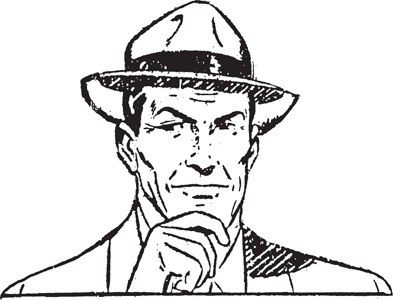
The following very selective bibliography is just one biased and personalized route through an embarrassment of secondary literature riches.
Benjamin, Walter, Illuminations, London: Pimlico, 1999. Every postmodernist home should possess a copy.
Berman, Marshall, All that is Solid Melts into Air: The Experience of Modernity, London: Verso, 1983. An exuberantly politicized take on modernity.
Butler, Christopher, Early Modernism: Literature, Music and Painting in Europe, 1900-1916, Oxford: Oxford University Press, 1994. A useful multi-art form perspective.
Clark, T.J., Farewell to an Idea: Episodes from a History of Modernism, New Haven and London: Yale University Press, 1999. From one of the foremost art historians of the modernist movement.
Conrad, Peter, Modern Times, Modern Places, London: Thames and Hudson, 1998. A very readable and engaging account, full of intricate connections, entry and exit points.
Cook, Pam, and Bernink, Mieke (eds), The Cinema Book, 2nd edition, London: BFI, 1999. An excellent introduction to different aspects of film study.
Crow, Thomas, “Modernism and Mass Culture in the Visual Arts”, in Modern Art in the Common Culture, New Haven CN: Yale University Press, 1996. A key intervention in the mass culture and art debate. Donald, James, Imagining the Modern City, Minneapolis: University of Minnesota Press, 1999. A fascinating exploration of the politics and poetics of the modern city.
Hansen, Miriam, “The mass production of the senses: classical cinema as vernacular modernism”, in Gledhill, Christine, and Williams, Linda (eds), Reinventing Film Studies, London: Arnold, 2000. A stimulating analysis of the problematic relationship of film to modernism.
Huyssen, Andreas, After the Great Divide: Modernism, Mass Culture, Postmodernism, Bloomington and Indianapolis: Indiana University Press, 1986. A thought-provoking account of the connections between modernism and postmodernism.
Marvin, Carolyn, When Old Technologies were New: thinking about electric communication in the late nineteenth century, New York and Oxford: Oxford University Press, 1988. Provides an invaluable “archaeological” context for understanding modern technology and culture.
Moretti, Franco, Signs Taken for Wonders: Essays in the Sociology of Literary Forms, London: Verso, 1983. An original and productive series of interpretations and readings of modernist cultural phenomena. Nicholls, Peter, Modernisms: A Literary Guide, London: Macmillan, 1995. One of the best overall literary guides and introductions.
Sparke, Penny, A Century of Design: Design Pioneers of the Twentieth Century, London: Mitchell Beazley, 1998. A very good survey of modern design.
Willett, John, The New Sobriety: Art and Politics in the Weimar Period 1917-33, London: Thames and Hudson, 1978. An accessible verbal and visual narrative of one of the high moments of modernism.
Williams, Raymond, The Politics of Modernism: Against the New Conformists, London: Verso, 1989. Contains some lucid essays on the relationship of modernism and the avant-garde to politics.
Wollen, Peter, “The Two Avant-Gardes”, in Readings and Writings: Semiotic Counter-Strategies, London: Verso, 1982. A polemical and historical account of parallel film movements.
Some useful anthologies:
Chipp, Herschel B. (ed.), Theories of Modern Art, Berkeley and London: University of California Press, 1968.
Frascina, Francis, and Harrison, Charles (eds), Modern Art and Modernism: a Critical Anthology, London: Paul Chapman, 1982.
Harrison, Charles, and Wood, Paul (eds), Art in Theory, 1900-1990: an Anthology of Changing Ideas, Oxford: Blackwell, 1992.
Levenson, Michael (ed.), The Cambridge Companion to Modernism, Cambridge: Cambridge University Press, 1999.
Among a plethora of journals, Modernism/Modernity is recommended.
